Building a customer service knowledge base may seem like an arduous task. You’re wondering how to create the articles and guides, and which knowledge base software would work best to publish it. Additionally, you need to figure out how to keep things organized, make it easy for customers to find the information they need, and update the content as required.
Things can get confusing quickly, but they don’t have to be. With the right resources, you can easily create a knowledge base that your customers will find valuable. You can populate the knowledge base with articles and interactive guides that help users self-serve consistently. And since Forrester reports that customers would rather self-serve with a knowledge base than contact support, giving customers that option will significantly reduce ticket volumes.
In this article, we’ll cover everything you need to know about building a customer service knowledge base:
- A step-by-step guide on how to create a knowledge base.
- Common mistakes to avoid while building your customer service knowledge base.
- Knowledge base best practices you need to keep in mind as you build.
Want a knowledge base for customer service? Stonly helps you build simple, yet interactive, customer service knowledge bases, without coding. Start a FREE Trial.
What’s a customer service knowledge base?
A customer service knowledge base, sometimes called a help center, contains everything a user needs to understand how a product works and troubleshoot any problems they encounter. Resources available on a knowledge base may be in the form of help center articles, interactive guides, video tutorials, and answers to frequently asked questions.
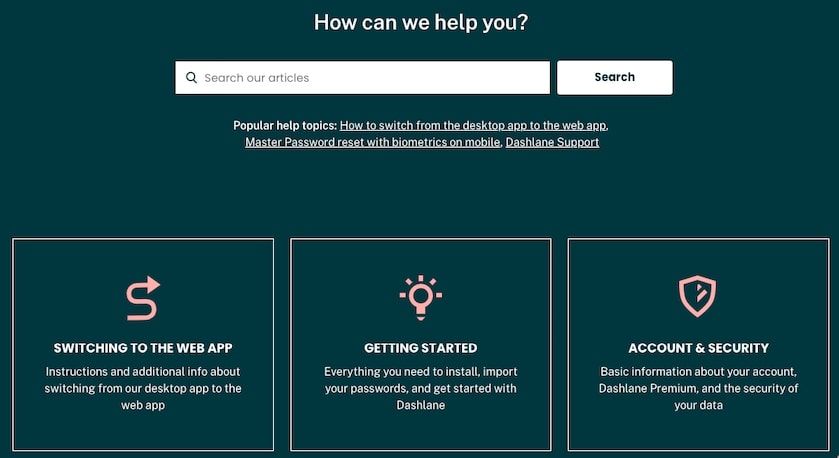
Knowledge bases are an essential tool for self-service, and they help reduce customer over-dependence on support agents to solve straightforward issues. As long as the articles are engaging enough, and the guides are tailored to their needs, users prefer to find answers independently. With a customer service knowledge base, you can give your customers what they want while cutting down your operating costs at the same time.
Benefits of a customer service knowledge base?
A customer service knowledge base is a valuable resource for not only your customers but also for your support team and other employees across your business. Here are some benefits of a knowledge base:
1. Reduce support ticket volume
79 percent of consumers surveyed say they’ve used a self-service portal (like a knowledge base). This indicates that if you provide your users with a resource-rich knowledge base, they’ll have no issue using it to find solutions independently. And the more customers rely on your knowledge base to find a solution, the fewer support tickets your customer service team has to process. This frees them to solve the more complex issues that require human intervention.
Related post: 15 Best Knowledge Base Examples in 2021 [Critically Reviewed]
2. Customer service knowledge bases are accessible 24/7
A customer service knowledge base is one of the best ways to provide round-the-clock support without committing too many resources. The guides are available on your website or web app 24/7. So whenever a user needs help, they can simply navigate to the knowledge base and find an article that provides a solution.
3. They support different learning styles
A knowledge base can include resources that work well with different learning styles and types of issues. You can include a mix of linear articles, interactive guides, and videos. With a customer service knowledge base, you can provide a tailored support experience to all users.
Related Post: 10 Best FAQ Software Tools for Customer Support
4. A knowledge base can be used to deliver help where needed
With some modern knowledge base software, you can provide help center articles and user guides directly on the pages or tools where users are likely to run into issues. As a result, your customers won’t need to open a new tab or look too far to find an answer. Rather, they can access the knowledge base via a widget, type in a problem, and self-serve without leaving the page.
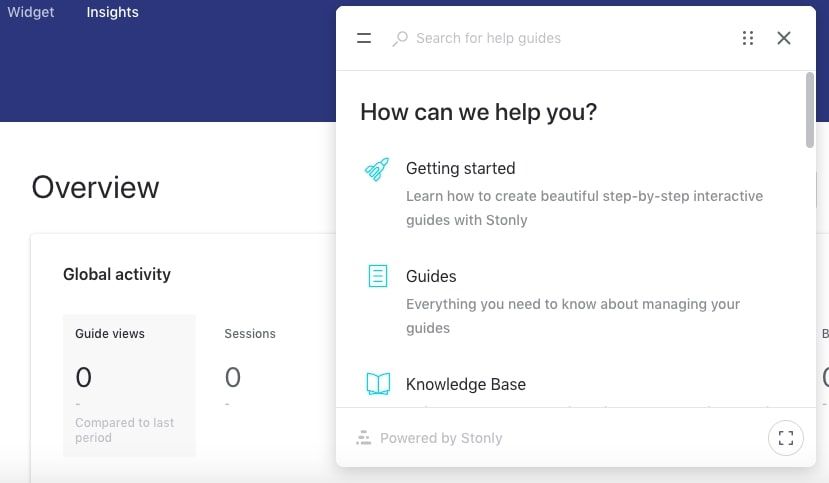
5. They can be used to improve customer satisfaction and reduce churn
According to a recent survey, 88 percent of consumers say they expect a company to have a self-service support portal. This shows that customers understand the benefits of a knowledge base and how much value it offers. So if your customers need help with an issue, there’s a chance they'll check for a knowledge base before contacting support. If they don’t find one, the quality of their overall experience is reduced, which may lead them to abandon your product.
Related post: What is an NPS Program & How to Build One? [Detailed Guide]
6. Knowledge bases can be used to collect customer insights
Customer service knowledge bases can be used to collect valuable insights. You can see what parts of your product customers need help with, what terms they use to search for a solution, and which articles help them self-serve. This information can be used to improve your product and upgrade the content on your knowledge base.
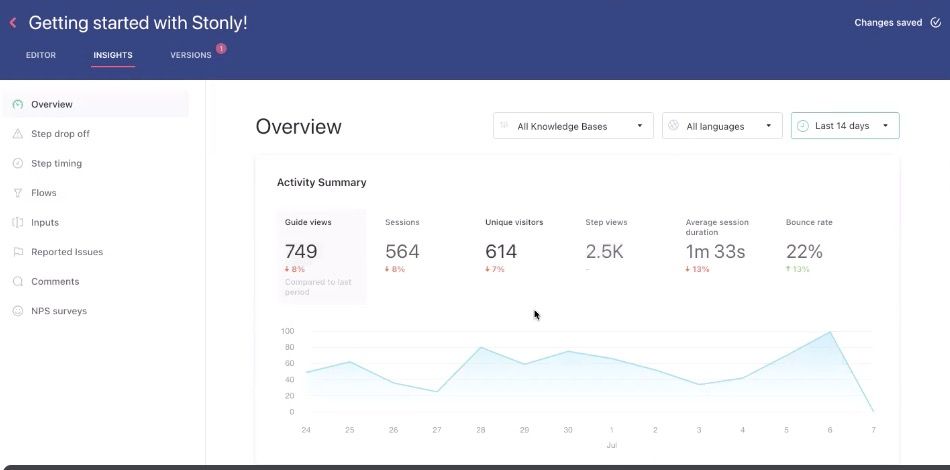
When to build a customer service knowledge base for your company?
If you can, it’s great to start building a customer service knowledge base before your product goes live. As a result, when the product starts serving users, there’s an accompanying knowledge base to provide guidance. This ensures your customers know self-serve support is the norm on your platform from day one, and they get accustomed to solving complex issues without opening a ticket or reaching out to your support team.
If you don’t have a lot of articles to include in your knowledge base at the start, that’s not a problem. Start covering important topics that you know customers need help with, and your knowledge base will grow and evolve over time.
Having a knowledge base established from the beginning also means you have a structure in place when customers start reporting problems and can begin building articles to help self-serve through those issues.
How to build a customer service knowledge base? Step-by-step
While it’s essentially a customer service tool, building a knowledge base requires contributions from several departments in your company. You’ll need customer insights from the support team and specialized knowledge from the product/engineering team.
It’s easier to get going once you start, so here’s a seven-step guide detailing everything you need to do:
- Assign an owner
- Make a list of common customer queries/pain points
- Choose your knowledge base software
- Create an outline of your knowledge base
- Determine your first five articles and start writing
- Launch your customer service knowledge base
- Put your knowledge base where users need it
Step 1: Assign an owner
Select someone to take charge of creating the knowledge base and updating the content as needed. For this role, you want someone with organizational skills and product knowledge, someone who excels at collaborating with their coworkers. Since the support team handles the day-to-day issues customers face, often someone from that department will be the owner.
The owner will be required to interface with other workers and find contributors with the necessary expertise to create detailed guides. If you’re reading this post, then you may be the person to take ownership of your company’s knowledge base.
Common mistakes to avoid
- Don’t restrict your search to the support team. It's most important to find somebody collaborative who understands customer pain points and can find the answers.
- Don’t take on everything yourself! If your company needs an extensive knowledge base, you may need to create a team of co-owners, perhaps with domain over different product areas.
Step 2: Make a list of common customer queries/pain points
For this step, you’ll need to create a list of issues customers struggle with constantly. You may already have a good idea of where to start, but there are a few places to look if you need ideas:
- Ask support leaders and team members which topics people ask about most often.
- Check your support ticketing system to identify high ticket volume issues.
- If you already have an FAQ, determine which answers require articles.
Create a document, list these topics, and arrange them in order of importance. After you’ve collected common customer issues, refer to internal documentation to come up with answers. If needed, talk to subject matter experts (SMEs) who can provide a complete solution.
Related Post: Internal Knowledge Base: What, Why, and How? [Definitive Guide]
Common mistakes to avoid
- Don’t overlook “small” issues. There’s no such thing as a user pain point that’s too straightforward. If a good number of your customers are opening tickets to solve a problem, no matter how simple you think it is, you have to create a knowledge base article that addresses it.
- Don’t forget to ask those in charge of your company’s social media channels about common customer pain points. They’re immersed in customer data daily and will know what problems people are facing.
- Don’t obsess over getting this initial list perfect. Choose your first few topics, and keep moving. Your knowledge base will be a living, breathing part of your company and will continue to grow.
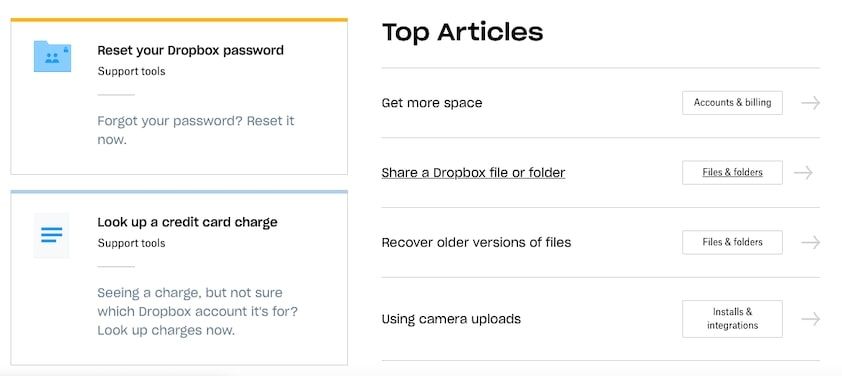
Step 3: Choose your knowledge base software
Knowledge base software makes it easy to create, publish and distribute help content. It also provides a means to update the content and add new guides as your company builds more products.
Some modern features to look out for include:
- A no-code editor that lets you create intuitive, step-by-step guides that empower your users to self-serve.
- An integrated search bar that simplifies navigation and helps customers find the articles they need.
- Reporting and analytics to measure how impactful a knowledge base is and which areas need improvement.
- Widget functionality to place help center articles where customers need them the most.
For example, Stonly removes all complexity from knowledge base building, providing the tools to create interactive guides in simple steps. The search bars on knowledge bases built with Stonly come equipped with an auto-complete feature. When users type in a query, they get a list of guides that contain the search term. This makes navigation intuitive and helps customers find help quicker.
To make your knowledge base even more engaging, Stonly lets you place illustrations beside your step-by-step guides. So while the user follows your written instructions, they get a visual presentation of the steps they’re supposed to take. With these features, the probability of customers using self-service increases significantly.
Traditional knowledge bases are full of static, long-form content. This works for some topics, but many issues require step-by-step solutions. Stonly lets you build a modern knowledge base full of interactive guides. These guides are much more engaging, so customers are more likely to follow them to a resolution. Plus, Stonly lets you include different paths in each guide so you can provide every customer with the exact information that’s most relevant to them.
Stonly’s interactive format has other benefits, too. Since solutions are broken into more digestible steps, you can include all necessary images and information without feeling overwhelming. Stonly’s search can direct customers to the exact right step, meaning they get to answers faster. With Stonly’s built-in analytics, you’ll see what content people use, which paths they follow, and where they drop off.
Want to see how easy it is to build a powerful knowledge base with Stonly? Start a FREE Trial.
Step 4: Create an outline of your knowledge base
How will the homepage of your knowledge base look? How many folders will you have? What would these folders address? Do you want to include a few featured guides? An outline answers these questions, and you need to build one before you start writing articles or creating guides.
With Stonly, you can easily add new folders to your homepage, and there’s a preview showing how the layout looks as you build. Ideally, you should have folders to help users get started, set up an account, and troubleshoot common issues.
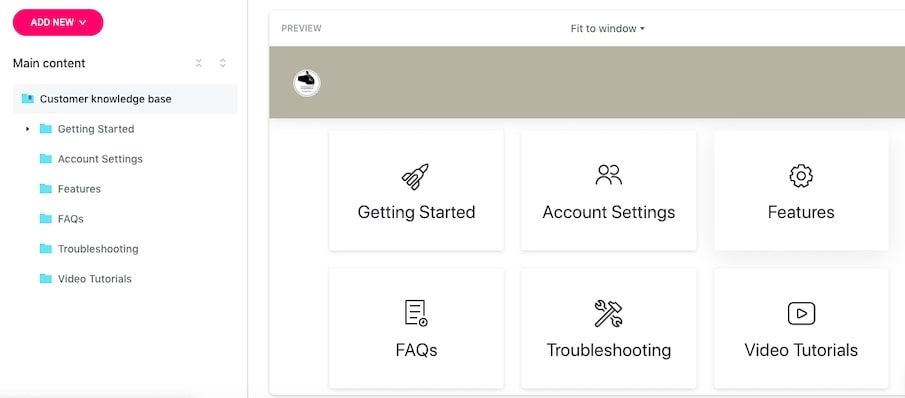
Common mistakes to avoid
- Don’t clutter your homepage with too many folders. Create broad categories and place articles and guides into relevant sections. Customers will open the folders that correspond with the problem they want to solve.
- If you have distinct customer segments, don’t miss the opportunity to create separate sections for them. See how Malt segmented its knowledge base below:
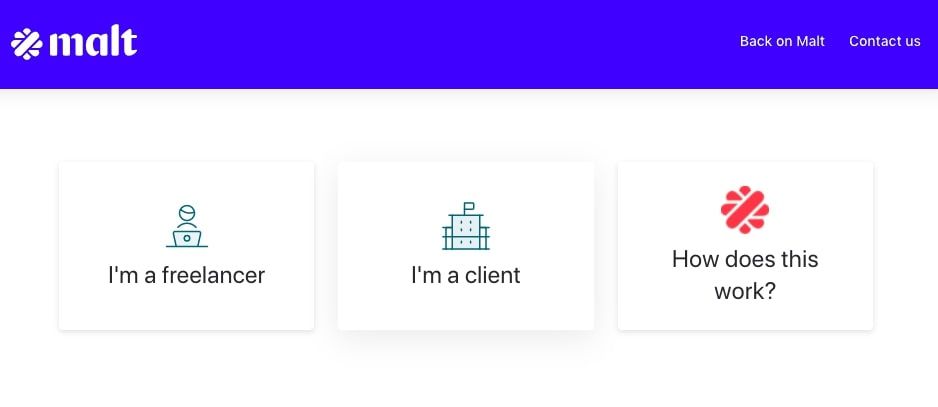
Related Post: 7 Best Customer Service Software Tools: A Detailed Comparison
Step 5: Determine your first five articles and start writing
Since you already have a list of common customer pain points, you can now decide on the first articles to write. Look through the list you created in step two, and pick five problems customers contend with frequently. You want to focus on issues that are self-servable, i.e. the ones that customers can follow a step-by-step guide to resolve.
After selecting your first five, you can start creating the content.
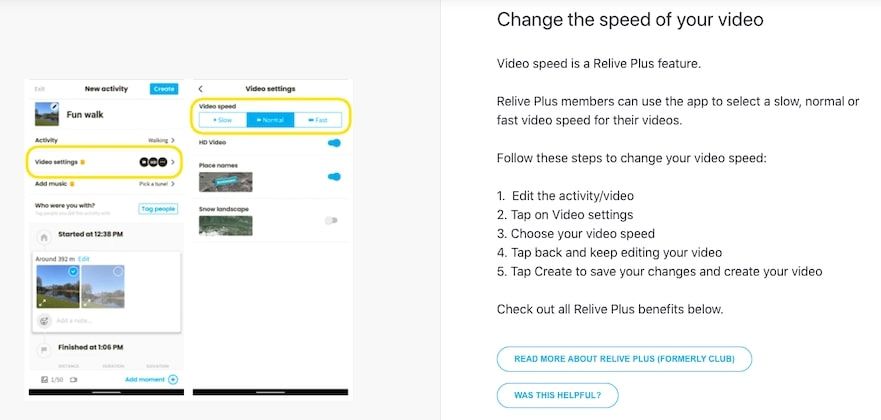
Common mistakes to avoid
- Don’t forget to use lists, bullet points, callouts, screenshots, and GIFs to make the steps easier to follow.
- It’s best practice to take the steps you’re describing while you write the articles. This ensures you don’t miss any steps, and along the way, you can collect images/GIFs to attach to the guide. Missed steps make it difficult for users to follow your lead and self-serve.
Step 6: Launch your customer service knowledge base
You can launch your knowledge base once the first set of articles are complete. Place a link to it on the header and footer sections of your website, those are the first places users check when looking for self-service tools.
Most companies use the name “Help Center” to describe their customer service knowledge base, and they place them under “Support” or “Resources.” It may be practical to do the same.
Common mistakes to avoid
- Don’t wait until you have a comprehensive knowledge base to launch. Start small: a small knowledge base is better than none.
Step 7: Put your knowledge base where users need it
In addition to the header and footer sections, modern knowledge base tools make it possible to provide your help center in context. This means you can place your knowledge base on your website, in-app, and anywhere users may need it. Stonly even lets you determine which sections of the knowledge base you want to show on which pages.
As a result, if a user runs into a problem while using your product, they can click on the “Help” or “?” widget and find help center articles that pertain to the exact problem they’re facing. This makes self-service intuitive and more personal to each user.
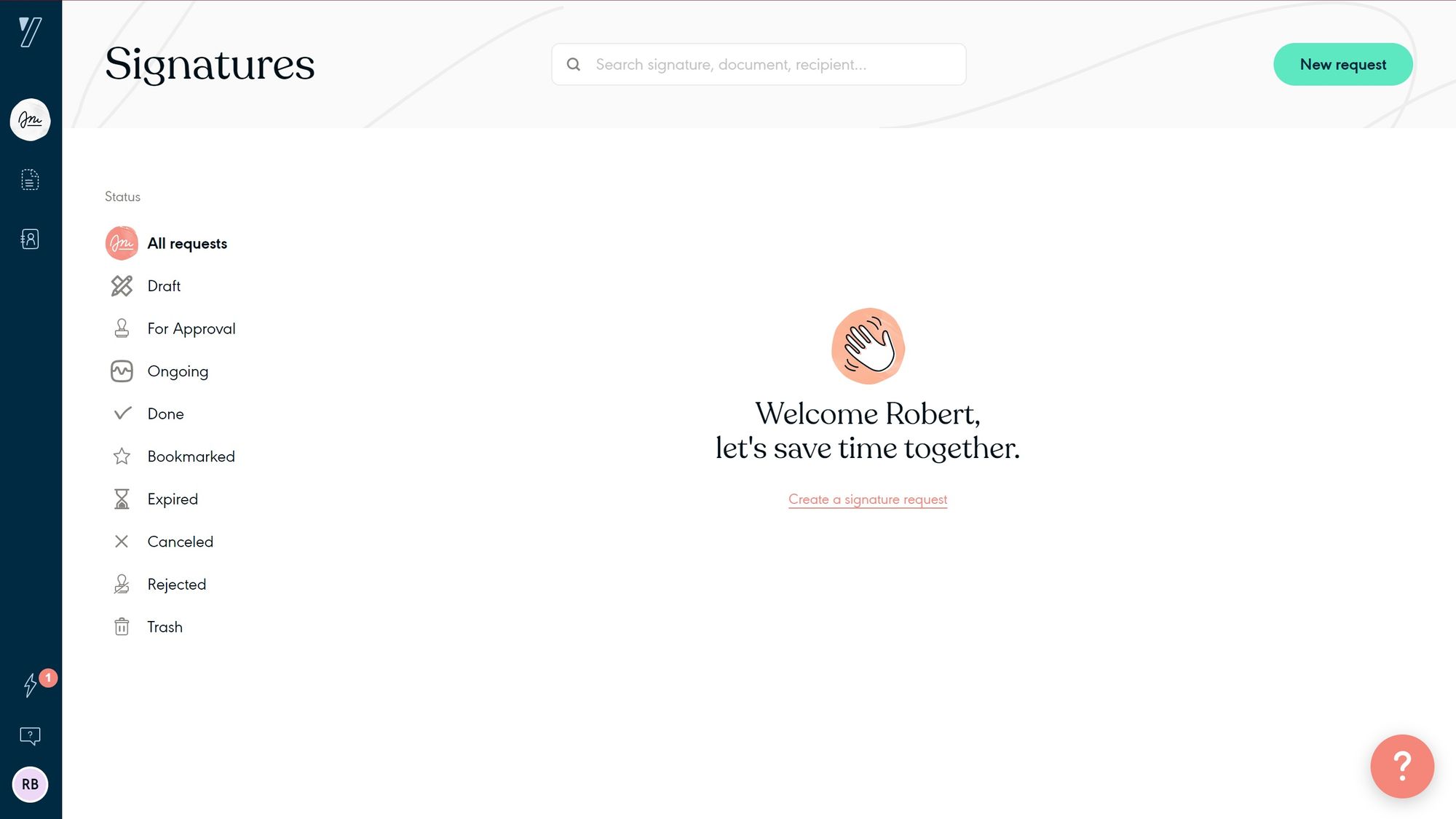
Common mistakes to avoid
- Offer your knowledge base before customers contact support. It’s often the fastest, easiest way for them to get an answer. Make it easy to find!
Want a knowledge base for customer service? Stonly helps you build a beautiful, interactive customer service knowledge base, without any code. Start a FREE Trial.
Best practices for building a customer service knowledge base
Here are some customer service knowledge base best practices to keep in mind as you create and publish your help center:
1. Focus on the most prominent customer issues
There are certain areas of your product/process that customers are prone to struggling with. To decrease support tickets because of issues around these pain points, you need to focus on them intently in your knowledge base.
2. Keep your knowledge base layout intuitive
Make it easy for customers to find the information they need from your knowledge base. After you create each article, decide which of the categories on your homepage you will add it to. Try to use your customer’s point of view to inform how you categorize your knowledge base content. If they use certain words to search for topics, include those as tags so the content will appear in search and your content is easy to find.
3. Help users find more information with good internal linking
On occasion, users will open an article in a bid to self-serve but won’t find the information they need. To increase your self-serve ratio, it’s important to link related guides and articles together. That way, even if they don’t find help on one page, it leads them to another that may be more relevant.

4. Use images, GIFs, and videos to provide a complete picture
Use images, GIFs, and videos liberally in your knowledge base guides. Visual content is more engaging and helps customers self-serve better than content that’s strictly text-based.
You know your product inside and out, but your customers don’t. The more easy and obvious you can make your knowledge base to use, the more likely your customers will successfully self-serve.
5. Create a section for frequently asked questions (FAQs)
In self-serve support, the 80/20 rule is generally a good guide: 80% of people will be looking for 20% of topics. Include some of those topics in either an FAQ or featured articles section, so people can find those high-volume guides fast.
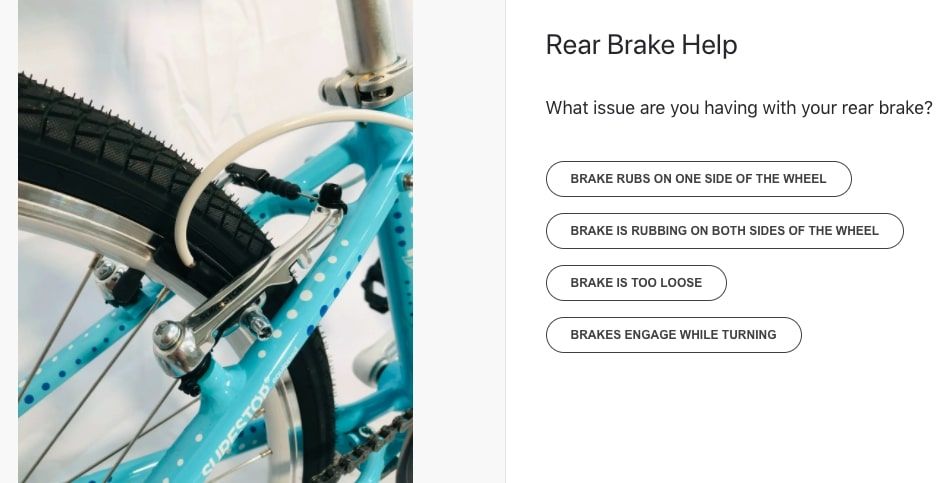
Related Post: 10 Best FAQ Page Examples to Spark Creativity
6. Create guides with different paths
Often, a single problem requires different solutions for different users, based on their circumstances. You want your content to reflect that. To help all customers self-serve, you need to cover all possible paths.
In the example below, Dashlane offered three potential solutions for the same problem. By doing so, it ensures that three different groups of users can solve their problem using the same guide.
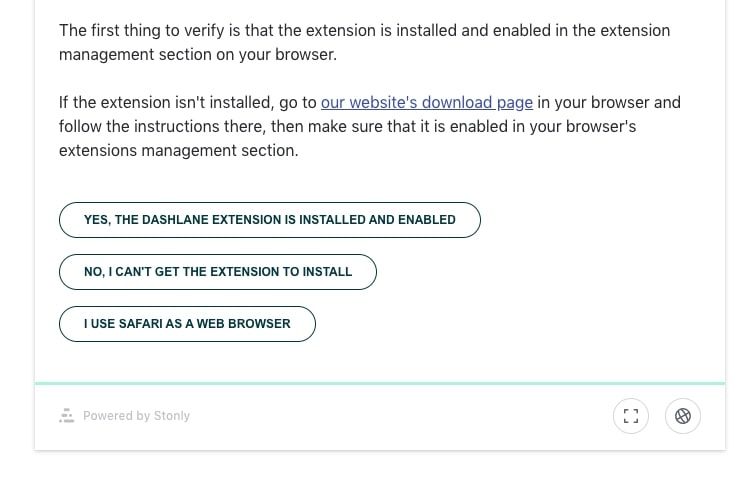
7. Match your knowledge base with the company's branding
Your knowledge base should be aligned with your brand. If you’re building a customer service knowledge base with Stonly, your colors are automatically added once you enter your web address. You can also customize fonts, layouts, and more to create a seamless experience.
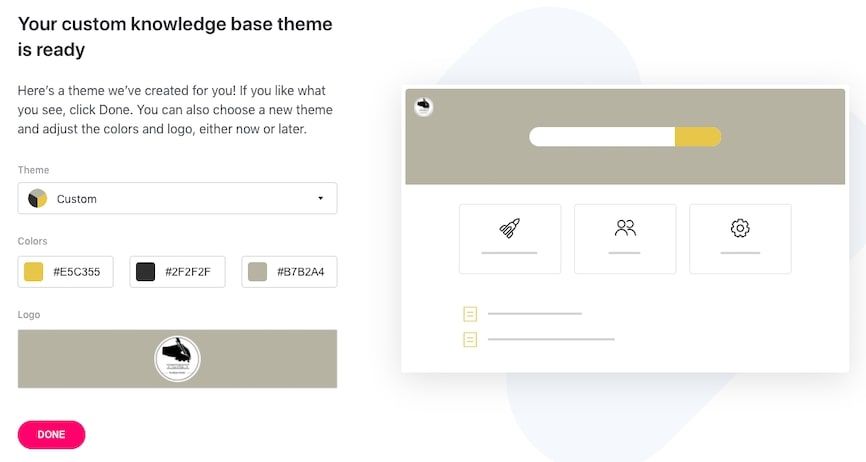
8. Collect customer comments and reviews
Let customers leave comments and reviews in your knowledge base. This shows what works and what you need to improve. You can learn a lot about how well your KB is working from the things your customers say about it.
9. Create a system to update your content and add new guides
It’s important to keep your customer service knowledge base relevant and update the articles as needed. As time passes and you add more products (or pinpoint more customer issues), you’ll need to add new guides. Additionally, put someone in charge of evaluating customer comments and reviewing your content regularly.
Final note: Building a customer service knowledge base
A good customer service knowledge base is an extension of your support department, and if done well, will reduce your team’s workload. A knowledge base is available round-the-clock, provides instant answers to customer queries, and is a cost-effective way to support thousands of users at scale. Customers have shown a preference for knowledge bases as a method of resolution, and many look for them when choosing a new product.
We’ve highlighted the steps you need to start building a knowledge base for your company, the pitfalls you must avoid, and the best practices to keep top of mind. Furthermore, to help you choose the right knowledge base tool, we listed some modern features to look out for. For a more detailed assessment, check out this article that outlines the 12 best knowledge base software out there.
If you want to promote self-serve support and reduce customer over-reliance on your support team, you need to start building a knowledge base. If you want a customer service knowledge base that deflects tickets and drives customer success, you need to build with Stonly.
Stonly lets you create interactive guides and easy-to-navigate knowledge bases. And you can build the entire thing without writing a line of code. The tool also enables you to place your help centers where users need them, and you get reports and advanced analytics that show you how valuable your guides are to users and which areas need improvement.
Want a knowledge base that promotes self-serve support? Stonly helps you build a powerful, modern knowledge base for your customers. Start a FREE Trial.
Frequently asked questions about customer service knowledge base
What is a customer service knowledge base?
A customer service knowledge base is a resource that contains help center articles, user guides, and frequently asked questions (with answers) about a product or service. It carries all the information a customer would need to understand how a product works and troubleshoot issues they run into while using the product.
How do you create a customer service knowledge base?
To create a customer service knowledge base, there are five important steps to take:
- Make a list of common customer issues.
- Choose a knowledge base software.
- Build an outline of your customer service knowledge base.
- Pick five articles that address common customer issues.
- Starting writing articles for your knowledge base.
What should be included in a knowledge base?
A customer service knowledge base should include everything a customer would need to navigate a product, and information to help them self-serve if they run into any issues while using the product. This includes onboarding resources, help center articles, user guides, product tours, and answers to frequently asked questions (FAQ).
How can I improve my knowledge base?
There are six straightforward ways to improve a knowledge base. They include:
- Use an intuitive layout so users can quickly find the information they need.
- Cover important topics especially well.
- Make your knowledge base extremely accessible.
- Create interactive guides that present solutions in easy-to-follow steps.
- Use images, GIFs, and videos to provide visual aids.
- Collect customer comments on how to improve the knowledge base.

